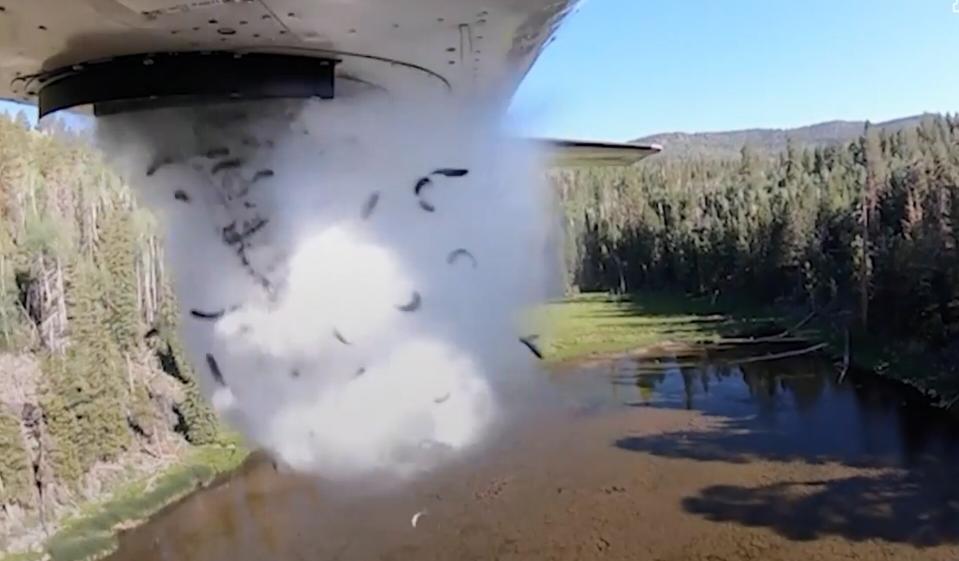Airplanes Drop Tens of Thousands of Fish into Remote Utah Lakes to Restock Them: VIDEO

Forget cats and dogs, it's raining fish in Utah!
Earlier this month, the Utah Division of Wildlife Resources shared a video on their Facebook page where they revealed that they stock around 200 remote lakes with fish through the use of small airplanes.
In the video posted, a tiny aircraft is seen releasing a group of fish into lakes that are not accessible by vehicle in the Boulder Mountain region. This is done in an effort to restock high elevation lakes where fish are not found.
The fish are between 1 to 3 inches long, per the Utah Division of Wildlife Resources, which allows the animals to "flutter down slowly" into the bodies of water. The fish used include rainbow trout, cutthroat trout, brook trout, tiger trout, splake and Arctic grayling, and are specifically raised for fishing, The Guardian reported.
The array of fish are dropped into lakes that do not home other fish and they are often sterile, so natural reproduction does not occur, the outlet added.
Never miss a story — sign up for PEOPLE's free daily newsletter to stay up-to-date on the best of what PEOPLE has to offer, from juicy celebrity news to compelling human interest stories.
RELATED: Minn. City Asks Residents Not to Release Pets After Lake Survey Turns up Football-Sized Goldfish

Using planes to stock the lakes in Utah has been around since the mid-1950s, the Utah Division of Wildlife Resources said.
Describing the method as "effective," the group added that "post-stocking netting surveys show that survival of aerial-stocked fish is incredibly high."
"Because the fish are small and released along with water, they easily survive their airplane drop without injury," the division said in a tweet.
The planes, which hold "hundreds of pounds of water," are able to release 35,000 fish in one flight without reloading.
"We used to load fish into milk cans and we needed horses to get us into these remote areas." the organization said on its YouTube page. "The aerial method of stocking is much quicker and less stressful for the fish."

